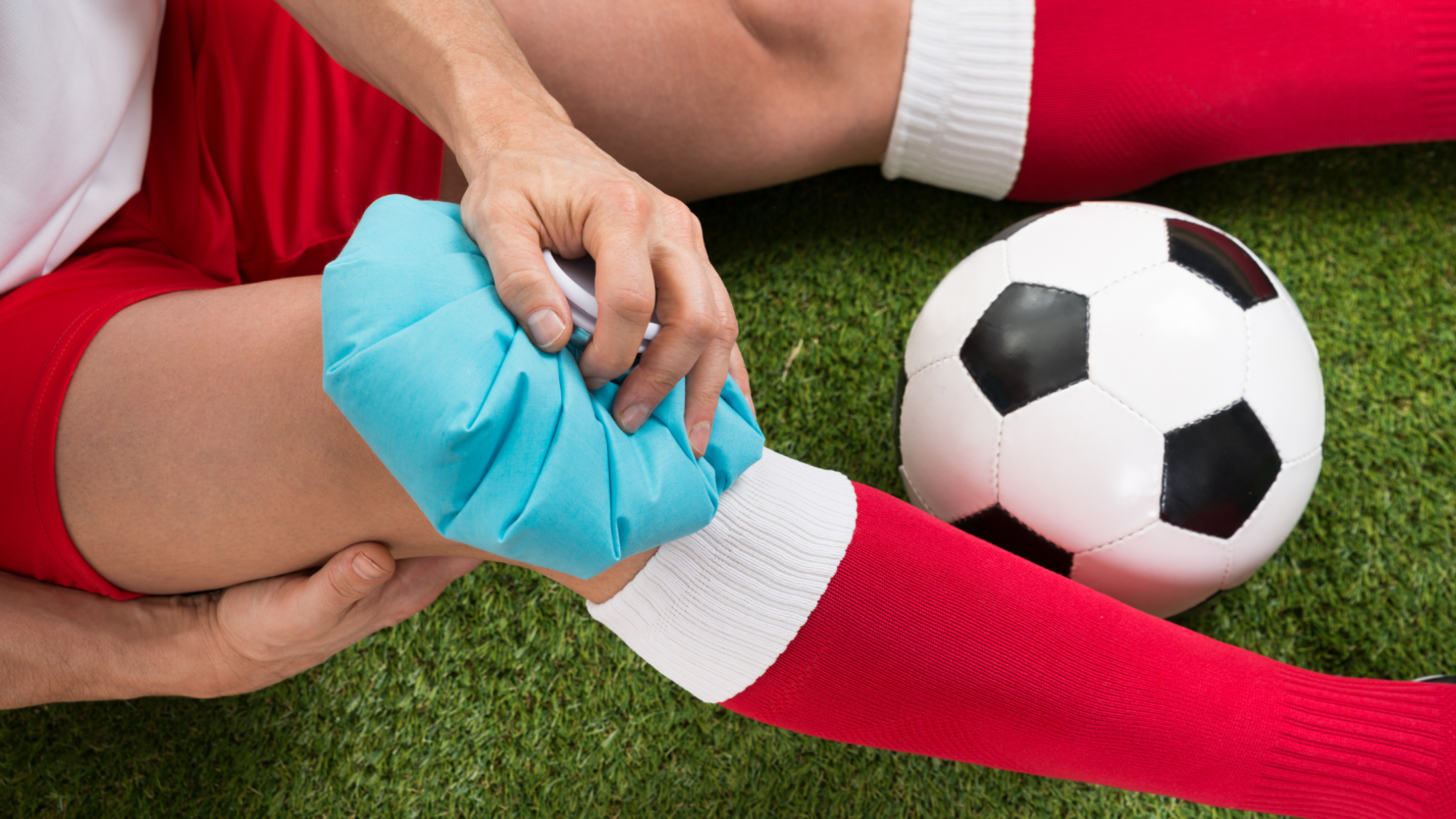As the crisp air of fall rolls in, athletes everywhere lace up their cleats and hit the field for soccer season. While the excitement of the game builds, so too does the risk of injury—especially to the ankles and knees. Soccer is one of the most physically demanding sports, requiring sudden starts, stops, pivots, and collisions. These rapid changes in movement put incredible stress on the lower body, making the ankles and knees especially vulnerable.
The good news is that many common soccer-related injuries can be prevented with the right preparation. Whether you’re a seasoned player, a youth athlete, or a weekend warrior, strengthening, stretching, and conditioning your body before the season starts can help protect your joints and keep you on the field all season long.
Why Ankles and Knees Are at Risk in Soccer
Soccer players perform hundreds of explosive movements per game—quick accelerations, directional changes, and kicks that load the legs with force. The two areas most at risk are:
- Ankles: Sprains are among the most common soccer injuries. Rolling the ankle or overstretching ligaments during sudden pivots or tackles can lead to painful swelling and weeks on the sidelines.
- Knees: From ACL tears to meniscus injuries, the knees bear the brunt of high-intensity movements. Playing on uneven fields or artificial turf can further increase injury risk.
The repetitive impact, combined with high-speed play and physical contact, means players need to build resilience in these joints before stepping into competition.
Pre-Season Conditioning for Lower Body Strength
Strength is your first line of defense against ankle and knee injuries. Strong muscles stabilize the joints and absorb impact before it reaches vulnerable ligaments.
Exercises for Strong Ankles
- Calf Raises: Stand on a step with heels hanging off. Slowly rise onto your toes and lower back down. Do 3 sets of 15 reps.
- Ankle Alphabet: Sit with your leg extended and “write” the alphabet in the air with your foot. This builds mobility and control.
- Resistance Band Eversions/Inversions: Strengthen the small stabilizing muscles by pushing your foot against a band, side to side.
Exercises for Strong Knees
- Squats: Focus on proper form, keeping knees behind toes. Perform 3 sets of 12.
- Lunges: Step forward, keeping your core engaged and knees aligned. Alternate legs for 10–12 reps.
- Glute Bridges: Strengthen hamstrings and glutes, which support the knees. Perform 3 sets of 15.
Building ankle and knee strength also improves balance, agility, and reaction time—skills that directly translate to better performance on the field.
Flexibility and Mobility: Protecting Joints from Strain
Tight muscles increase the risk of injury by limiting joint motion. Stretching before and after practices ensures your ankles and knees can move freely.
Dynamic Warm-Up (Before Play)
- Leg Swings: Swing each leg forward and back, then side to side.
- Walking Lunges with Twist: Add torso rotation to loosen hips and knees.
- High Knees and Butt Kicks: Increase circulation and warm up muscles.
Post-Play Stretching (Cool Down)
- Calf Stretch: Press one heel into the ground while leaning forward.
- Hamstring Stretch: Sit with one leg extended, reaching toward your toes.
- Quadriceps Stretch: Standing, pull one foot toward your glutes and hold.
Adding mobility drills like ankle circles, deep squats, and hip openers further reduces strain on ligaments and cartilage.
Balance and Proprioception Training
One overlooked area of soccer conditioning is proprioception—the body’s ability to sense where it is in space. Good balance and awareness help players recover quickly when pushed or tripped, lowering the chance of ankle sprains and knee injuries.
- Single-Leg Balance: Stand on one leg for 30 seconds, then switch. Increase difficulty by closing your eyes or standing on a cushion.
- Bosu Ball Drills: Perform squats or balance holds on an unstable surface.
- Cone Drills: Quick side-to-side footwork improves reaction time and agility.
Proper Footwear and Equipment
Shoes matter more than most athletes realize. Wearing the wrong cleats can increase ankle instability and knee stress.
- Choose cleats with the right stud length for your playing surface (shorter for turf, longer for grass).
- Replace worn-out cleats to maintain traction.
- Wear supportive socks and ankle sleeves if you’ve had prior injuries.
Shin guards should also fit properly, as improper gear can change movement patterns and affect joint stability.
Recovery and Rest: Giving Joints Time to Heal
Even with the best preparation, soccer is demanding. Recovery days are essential for long-term joint health.
- Ice sore ankles and knees after intense games or practices.
- Foam roll tight muscles to relieve tension.
- Sleep 7–9 hours per night to allow the body to repair.
- Cross-train with low-impact exercises like swimming or cycling to reduce overuse injuries.
Ignoring soreness or pushing through pain can lead to chronic issues that keep players sidelined.
When to Seek Professional Help
If you experience recurring ankle sprains, sharp knee pain, or swelling that doesn’t improve with rest, consult a sports medicine specialist. Early evaluation can prevent minor injuries from progressing into long-term damage. Physical therapy, bracing, or corrective exercises may be recommended to restore joint function.
Final Thoughts
Preparing ankles and knees for soccer season is about more than injury prevention—it’s about setting yourself up for a stronger, more confident performance. By combining strength training, flexibility work, balance drills, and proper recovery, you’ll give your joints the support they need to handle the demands of fall soccer.
With a little preseason preparation, you can enjoy the game you love—without being sidelined by avoidable injuries.

